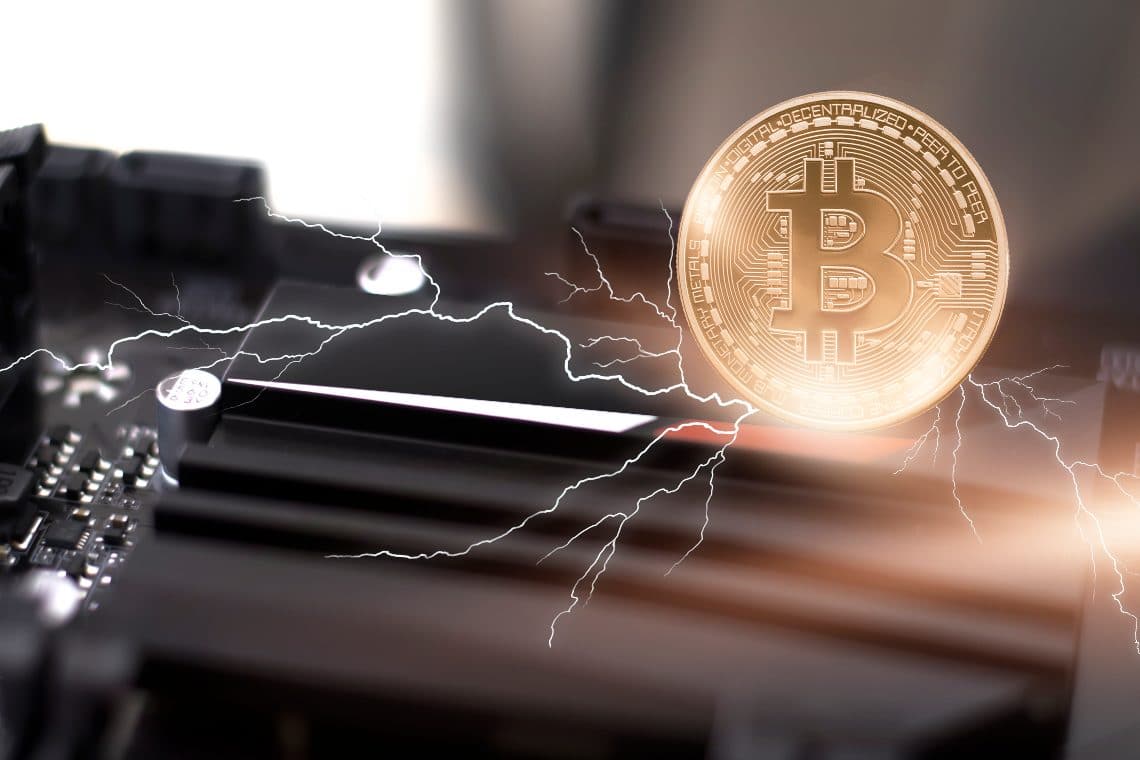There are some points that differ tbetween the bitcoins placed on the Lightning Network and those held on normal wallets that operate directly on the blockchain.
It must be said that all bitcoins are always physically located on the blockchain, as information recorded on that file consisting of a chain of blocks that we usually call blockchain.
Differences between bitcoins placed on LN and those stored on on-chain addresses
Even the BTCs that are put on LN are actually on that file, like everyone else, but that doesn’t mean at all that they can be used in the same way.
The bitcoins placed on LN are identical to those that are stored on on-chain addresses, but their use changes: the difference is only here.
In order to use bitcoin on the Lightning Network you need put them there.
The total amount of bitcoins immobilized on LN is called “Network Capacity”, and today in total there are about 2,400, for a value of approximately 110 million dollars.
In total, those who opened their own channel on the Lightning Network to be able to use it to send and receive bitcoins, moved 2,400 BTC from their on-chain wallets to their LN channels. Currently in total there are only 2,400 bitcoins that can be used all over the world through Lightning Network.
The main difference between the BTCs left on the on-chain wallets, and those moved to the LN channels, is that the latter can only be used on LN channels, or sent to other LN channels.
However, any open channel on the Lightning Network can be closed if desired, and in that case the bitcoins remaining on the channel are made available again to the on-chain wallet of the owner of the closed channel.
How a Lightning Network channel works
Each LN channel needs a supporting on-chain address on which immobilize BTCs that you intend to use on the channel itself, but only by closing the channel can they return to the address with which it was created in the channel.
Physically they are always guarded by the on-chain address used for the creation of the LN channel, but in fact they are immobilized. They can therefore only be used on the channel, or unlocked by closing the channel.
The opening and closing of an LN channel is free, and it can be done at any time, but both operations require the registration of a transaction on the blockchain. This transaction is not immediate, as those on LN are, and has the classic fees of an on-chain transaction.
The only thing that can be done both with BTC stored on on-chain addresses, and with those immobilized on LN channels, is to send them to another address.
In the case of traditional on-chain addresses, they can only be sent to other on-chain addresses or intended for the creation of their own LN channel. That is to say they cannot be sent directly from an on-chain address to a third-party LN channel.
Differences between transactions on LN
In the case of bitcoins immobilized on an LN channel, they can only be sent to another LN channel, or unlocked by closing the channel.
Although bitcoins immobilized on an LN channel are not physically moved from the on-chain address, even if they are sent to another LN channel, only the remaining bitcoins on the channel will be unlocked when the channel is closed. net of all transactions carried out by the channel itself, both incoming and outgoing.
In other words, if a Lightning Network channel carries out BTC sending or receiving operations, the BTCs unlocked at closing will easily differ from those frozen at the time the channel is created.
The biggest difference, however, is in the transactions: immediate and extremely cheap on the Lightning Network, slow and expensive on the blockchain.
–


